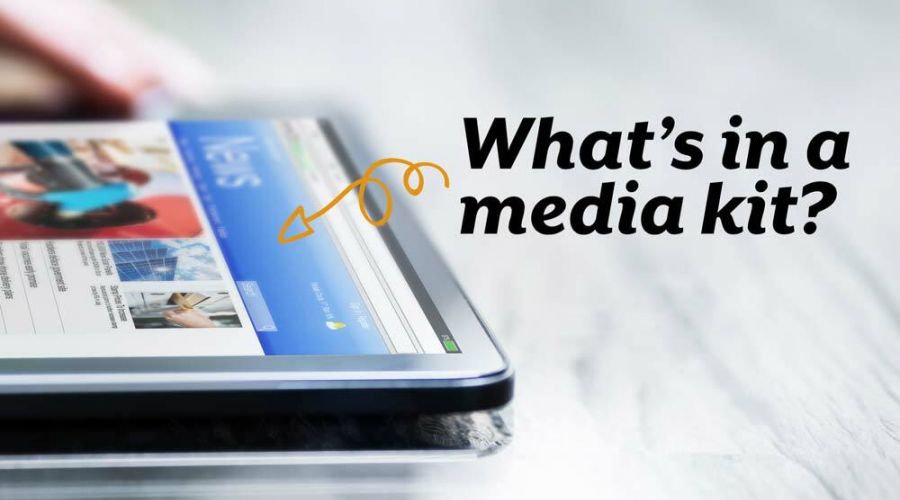
What’s a media kit and how do I create one?
A media kit (or press kit) is a package of information relevant for the distribution of information for companies, charities or other organisations. They include facts about the people involved, the product, service or cause, as well as brand information, logos, images and visuals supporting any press releases.
Media kits are a great way for a company to show just how engaged they are with their audiences. Whether you’re a local business, a non-profit or a large corporation, having a media kit will help you stand out from the crowd. So how do you go about creating one? Here are 10 things you should include in yours.
Background
When it comes to building an audience, the media needs to know who you are and what you do. The ‘about us’ section should include all of the basics: who you are, what you do, where you are operating, when things are happening, why you do what you do and how you do it.
Journalists are busy people, so keep the introduction short, to the point and consistent with your brand message.
Bios of your team
Include anyone in your team who is suitable for interviews, expert commentary, and speaking engagements. Make sure you include those members who are being mentioned in any of the press releases. Of course you include their bio in the press release together with the company information. It is however good practice to have them in the media kit as well.
Your products and services factsheet
This can be short bullets outlining your products or services. Think of it as factual descriptions similar to how you would present them on your website or in your brochures. Avoid to make it sound like marketing though. Highlight what makes you stand out from others. It’s also useful to include known Q&As here.
Case Studies
Case studies are a great way to demonstrate the success of your products or services. So without making this into a marketing document, here is a chance to include testimonials and recommendations from suitable sources. Again, be careful to avoid promotional talk and keep it factual and informative with the journalists in mind.
Clients or associates
Obviously ask for permission first, but if they are ok, mention them as it adds credibility to your organisation.
Recent press releases
When selecting press releases for your electronic press kit, it’s best to choose something that has been released within the last six months. Ensure that the heading of your press release is easy to grasp and includes any specific announcements the media may be looking for.
You in the news
Already had some mentions in the media? Here is your chance to shout about it! If you’ve been on camera, show a clip – it will work well to show researchers and producers that you are not a newbie… The media tends to have a knock-on effect so showing where you’ve been featured can be really useful.
Avoid any copyright issues by including the name of the outlet with a link to the article or clip. You are not allowed to add their logo without their permission. You also can’t bypass this by re-writing it or making it into a pdf or similar. Best to be straight as you don’t want media coverage to cause any issues.
Your brand kit / multimedia elements
Include your logo and logo guidelines, any photographs, infographics, graphics or videos that will help illustrate what you do. You can link from a pdf to a shared folder like dropbox or google drive – or directly from your website. That makes it easy for journalists to download them rather than having huge attachments.
If you need help with creating your brand kit with your logo, fonts, colours and brand visuals, or a website that can accommodate this information, get in touch with us to see how we can help.
Awards / memberships / accolades
If you have any recent and relevant awards, mention them. This doesn’t have to be an elaborate section, but it will again help with reputation building.
Contact details
Don’t forget to have all your contact details in your media kit. This includes any social media channels where you are active, as well as traditional phone numbers, email addresses and names of the best person to approach with any questions or opportunities for coverage.
In essence, press kits should give journalists a flavour of your brand that contains all the relevant background info and gives them an appetite for more. It’s a collection of visual and editorial facts about your company and gives journalists a helping hand if they see an opportunity to feature you.

Regine Wilber
I am a brand consultant and conceptual designer. I love using creativity to solve problems for our clients. In my spare time, I like jigsaws and probably a bit of a board game geek.















